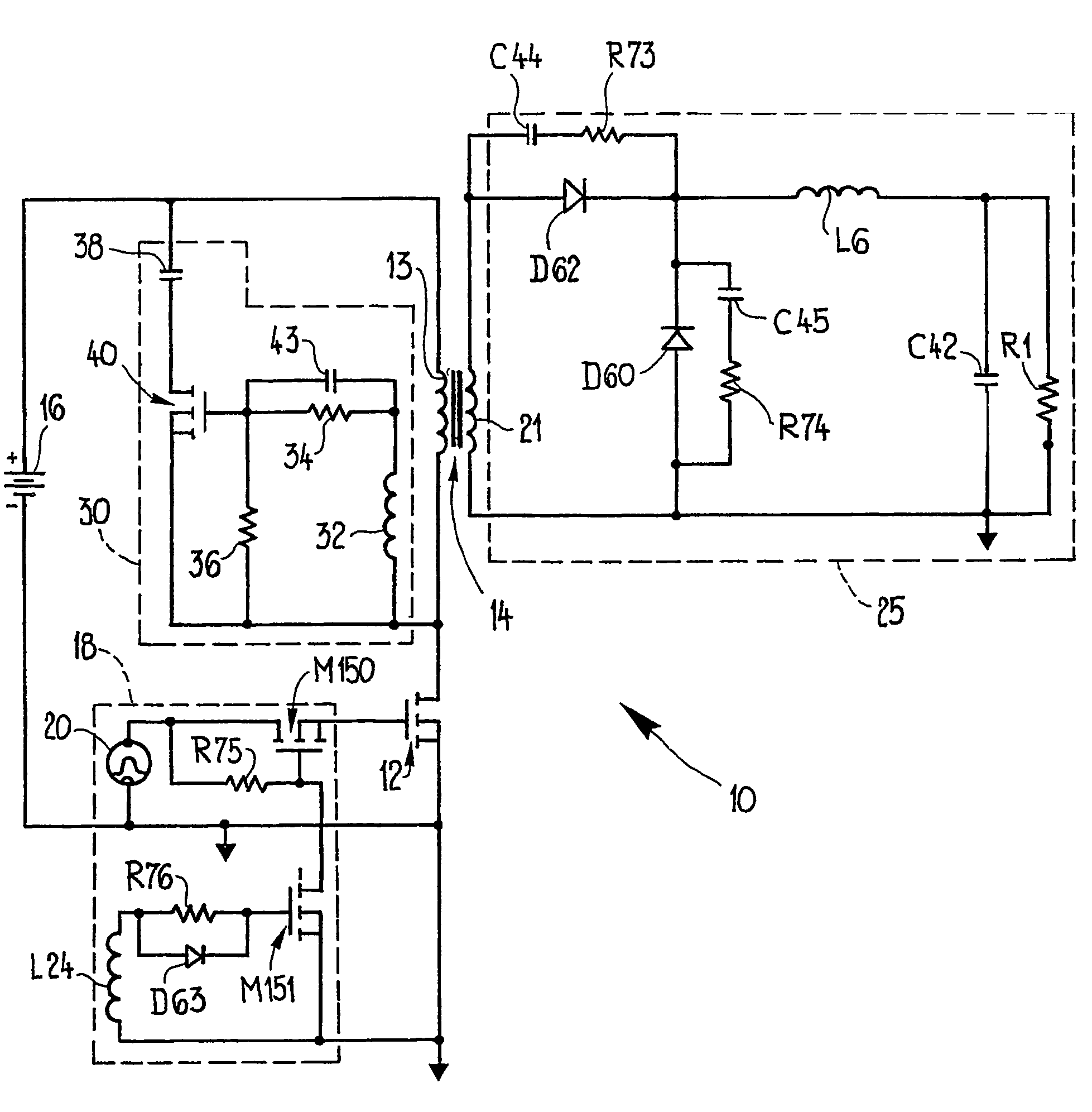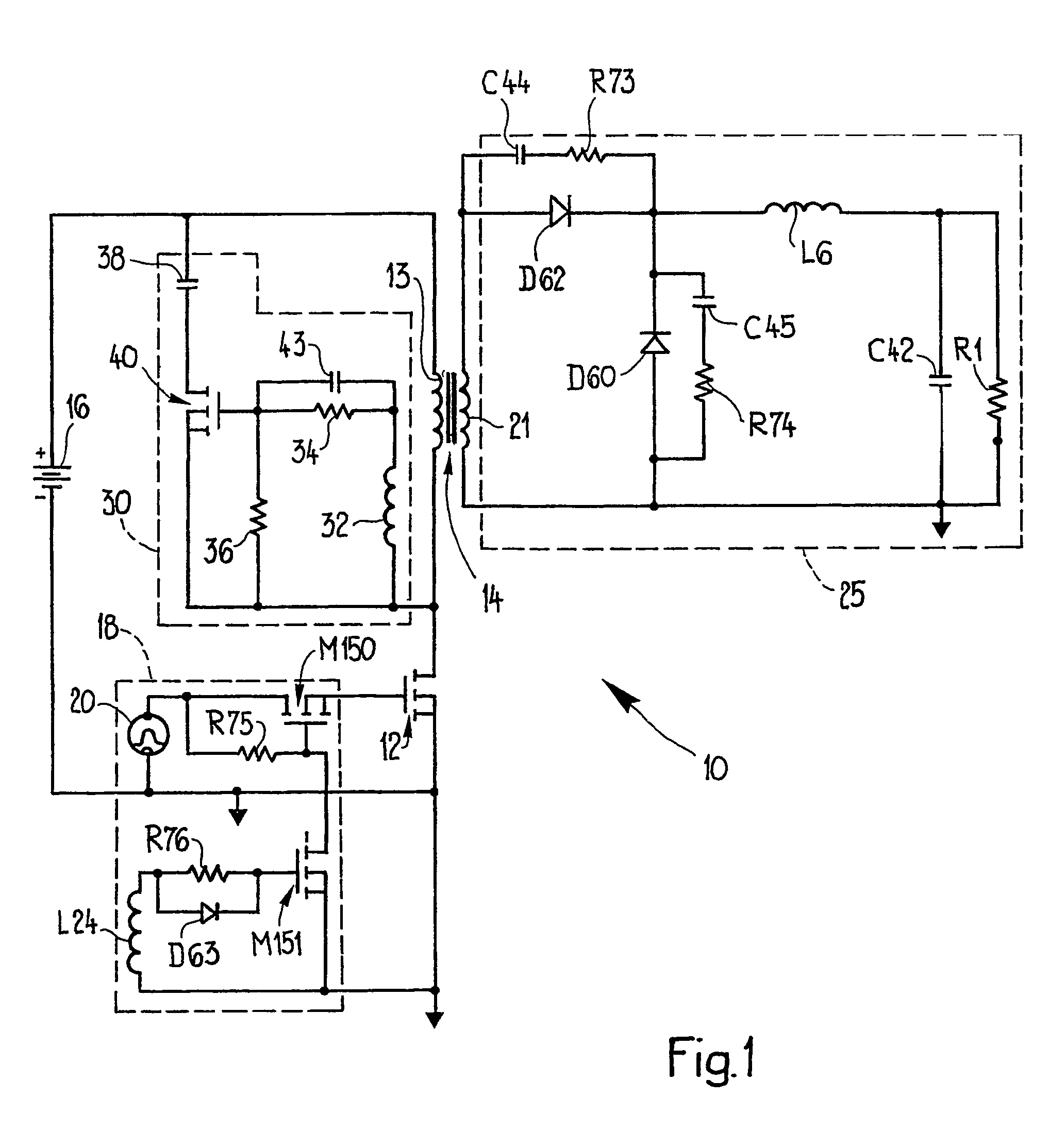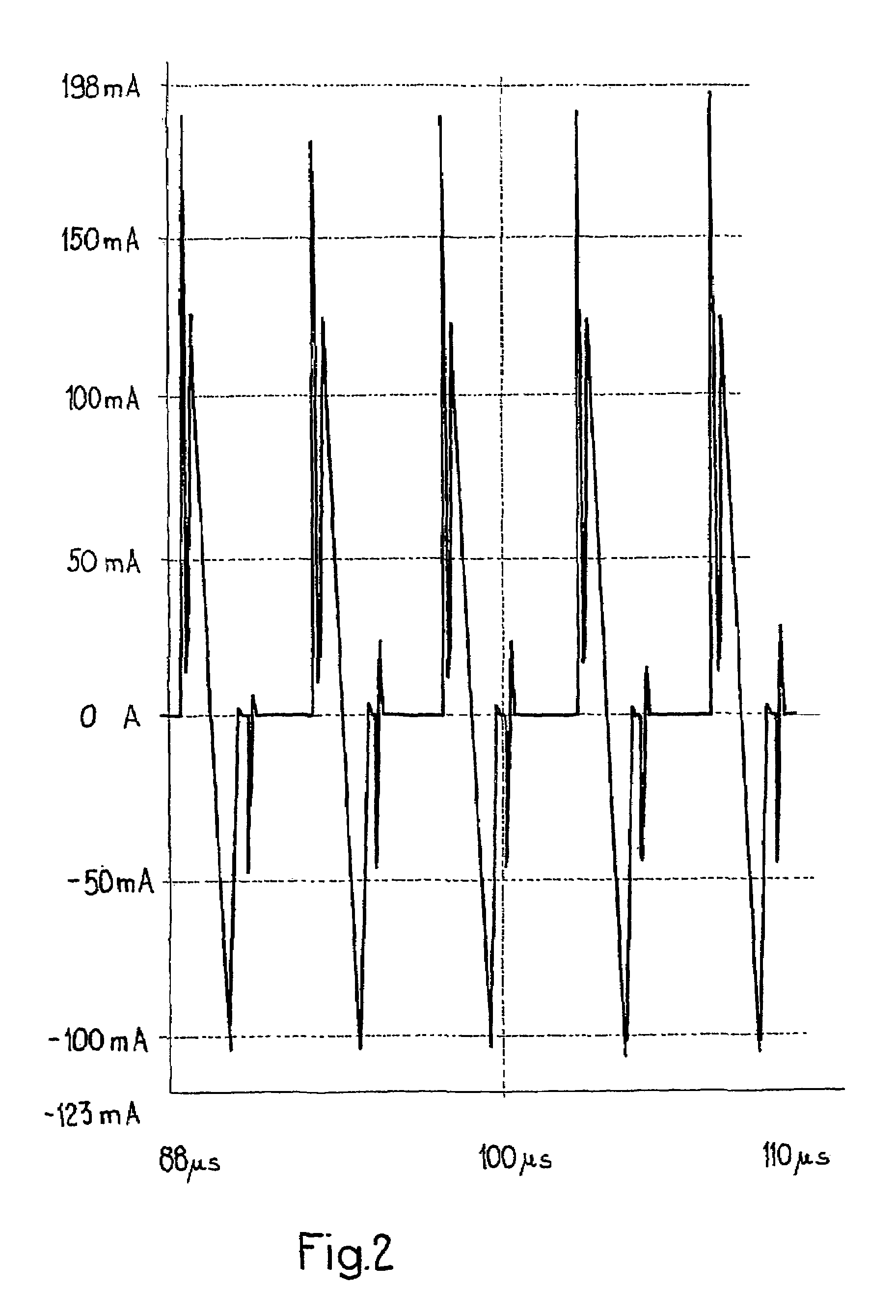Forward converter with controlled reset
a forward converter and control technology, applied in the direction of efficient power electronics conversion, electric variable regulation, instruments, etc., can solve the problems of transformers that cannot be used in the same way, transformers that are complicated, and the voltage spikes across the main switch at each turn o
- Summary
- Abstract
- Description
- Claims
- Application Information
AI Technical Summary
Benefits of technology
Problems solved by technology
Method used
Image
Examples
Embodiment Construction
[0037]Turning to FIG. 1, there is shown a forward converter 10 in which a main switch 12 is connected in series with a primary winding 13 of a power transformer 14 and a DC voltage source 16. Opening and closing of the main switch 12, a MOSFET device, is controlled by a switching circuit 18 coupled to the gate of the MOSFET switch. A voltage 20 supplies the input to the control circuit 18. The main switch, MOSFET 12, is opened and closed to interrupt and supply current through the primary winding 13 to generate a voltage across the secondary winding 21 of the power transformer 14. This is applied to a secondary or output circuit 25. The output of the forward converter 10 is applied across a load represented in. FIG. 1 by the resistance R1.
[0038]A reset circuit 30 includes a reset winding 32 wound on the core of the power transformer 14. Across the reset winding 32 a pair of resistors 34 and 36 form a voltage divider. A reset capacitor 38 is connected in series with a reset switch or...
PUM
 Login to View More
Login to View More Abstract
Description
Claims
Application Information
 Login to View More
Login to View More - R&D
- Intellectual Property
- Life Sciences
- Materials
- Tech Scout
- Unparalleled Data Quality
- Higher Quality Content
- 60% Fewer Hallucinations
Browse by: Latest US Patents, China's latest patents, Technical Efficacy Thesaurus, Application Domain, Technology Topic, Popular Technical Reports.
© 2025 PatSnap. All rights reserved.Legal|Privacy policy|Modern Slavery Act Transparency Statement|Sitemap|About US| Contact US: help@patsnap.com



